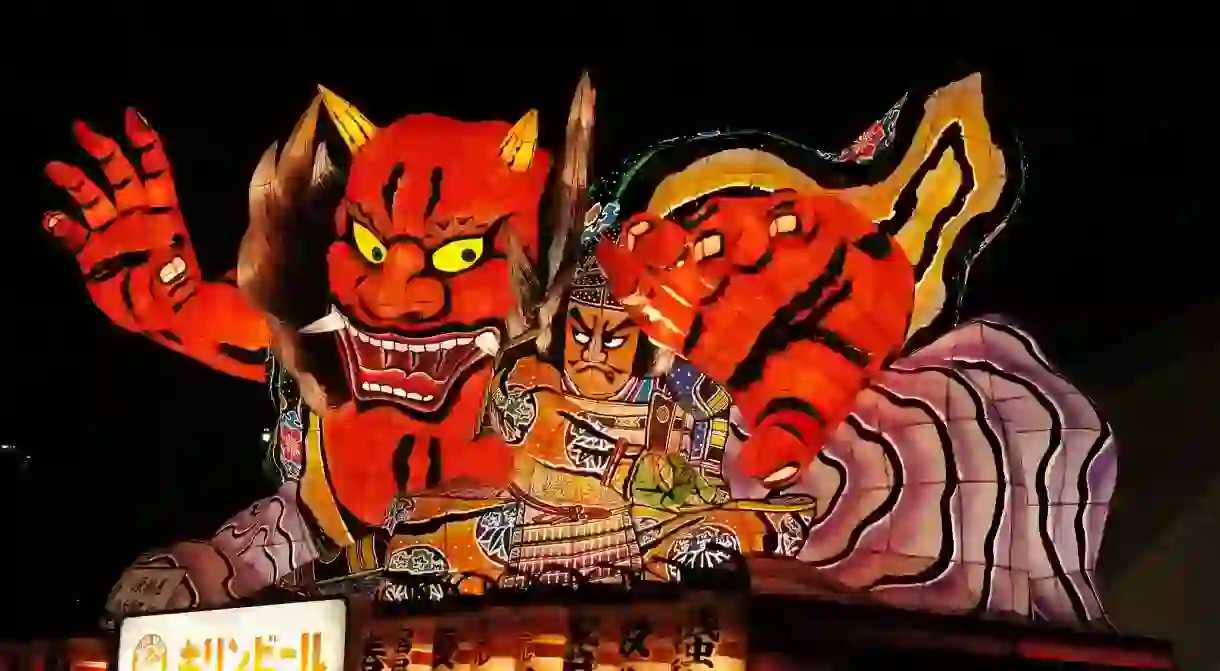Top 10 Things to See and Do in Aomori

Set in the northernmost Honshu, Japan’s main island, Aomori is known for its mountainous landscape, lush greenery, and wild street festivals. With four distinct seasons, unique events and outdoor activities, there’s no end of attractions to keep travelers busy. We take a look at the most fun and fascinating in the area.
See the Nebuta Matsuri
Attracting more visitors than any other nebuta festival in Japan, this epic summer festival runs for six days straight at the beginning of August. Nebuta are enormous paper floats modeled after ancient warriors; the floats are carried through the town surrounded by dancers dressed in traditional uniforms and chanting in the local dialect. Visitors are not only welcome but encouraged to dive in and participate in the festivities.
https://www.instagram.com/p/BI2Ro20h3oW/
Check out the Nebuta Warasse Museum
For travelers who can’t make it to the real Nebuta Matsuri, this is the next best option. The Nebuta Warasse Museum is dedicated entirely to the Nebuta Matsuri, attempting to capture the essence of the legendary festival by giving visitors a taste of the history, customs, and atmosphere of the event. The museum features photos, artefacts, and performances from the festival’s 300-year old history.
Create your own seafood dish at Furukawa fish market
Market, Japanese
Tour the Sannai Maruyama archaeological site
Discovered accidentally during the construction of a baseball stadium, excavations have turned up structures, homes, and artefacts from Japan’s Jomon era that are roughly 5,000 years old. The tour, which is available in English as well as Japanese, gives visitors a window into one of the ancient civilizations of Japan.
Achieve enlightenment at the Buddhist temple atop Mt. Osore
Located at the summit of Mt. Osore, this holy shrine was built in honor of Jiso Bosatsu, mythical Japanese deity and protector of the youth. Traditionally, people visit the site to mourn the death of a child or to attempt to communicate with the spirits of the dead. Whatever your reason for visiting, the area is considered one of the most peaceful and beautiful locations in Aomori.
https://www.instagram.com/p/BRK2HvgBIcD/
Drink beer at Kadare Yokocho
Drink more beer at Miroku Yokocho
This narrow alleyway located in the center of Hachinohe city features over 25 food stalls, bars, and izakaya. The stalls have a lively, open atmosphere and offer various types of seafood, grilled meats, and snacks, making it a popular destination for tourists as well as locals. This is a great place for travelers hoping to chat to some of the local residents.
Go apple-picking
Park
Ride the Hakkoda Ropeway
Travelers who want to Aomori’s scenic mountain views without actually having to hike can take the Hakkoda Ropeway to the top of Tamoyachidake, one of the multiple peaks of Mt. Hakkoda. The best time to visit is during the fall when the leaves change color.
Board the Seikan Ferry Memorial Ship Hakkodamaru
Until the Seikan Tunnel opened in 1988, ferries were the main mode of transportation between Honshu and Hokkaido, the northernmost island of Japan. Today, ferries are used sparingly, with most travelers opting for the convenience of the railway tunnel. After completing its final voyage in 1988, the Hakkodamaru ferry was docked at Aomori port and converted into a museum to serve as a reminder of the days before the tunnel was built. The ship is now open to the public and takes visitors on a self-guided tour through the cabins, top deck, and engine room.
https://www.instagram.com/p/BMoMgxkj8Ru/













